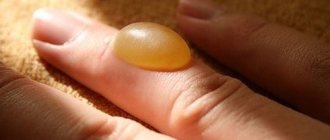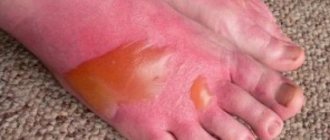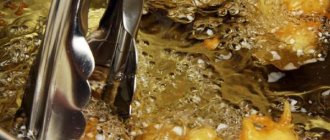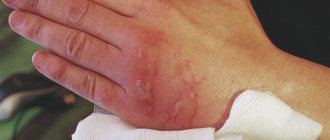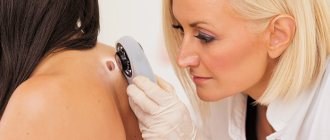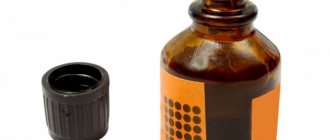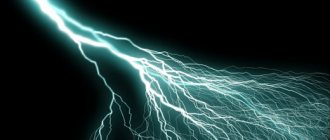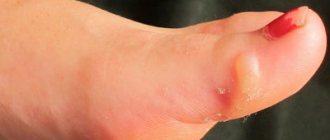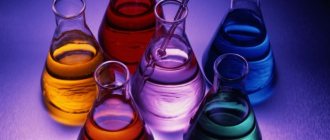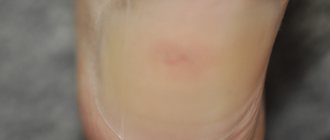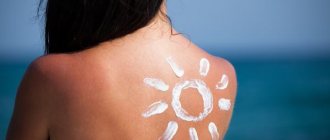Carelessness in handling household appliances very often causes thermal injuries of varying severity. If you are burned by an iron, what to do and how to provide first aid, as well as what the course of subsequent therapy should be - sometimes this is vital knowledge. After all, you can get burned quite badly, sometimes causing third-degree damage. In this case, it is necessary to determine what to apply to the iron burn at home to prevent infection and speed up healing. All therapeutic measures must be agreed with a doctor; timely actions will avoid serious complications.
Burn severity
The degree of burn from the iron must be determined immediately. Since the provision of first aid largely depends on this.
- The first degree is minor damage to the skin. Redness, slight swelling and swelling are noticeable. The skin may experience peeling or burning.
- The second degree is characterized by all of the above symptoms, but they are accompanied by the appearance of watery formations of various sizes.
- Third degree - deep burn, tissue death on the affected area of skin is noticeable.
Victims often suffer first and second degree injuries. The third stage is the most dangerous and is rare.
Symptoms
Yellow blisters from a burn
The main signs of a burn from a hot household appliance include:
- sharp pain in the damaged area and burning sensation;
- clearly visible redness and swelling of the skin;
- formation of yellow blisters.
Severe burns can cause painful shock. Deep wounds are characterized by necrotic scab and purulent formations.
Steam burn
You can get a burn not only after contact with the heated surface of the iron; hot steam can also severely burn the skin. It is important to understand the severity of steam injuries.
Only by this indicator can you find an effective way to treat a burn.
So, a steam burn is classified into the following degrees of severity:
- 1st degree – redness in the damaged area of the skin, swelling, pain. However, such a burn disappears on its own after 4-5 days.
- 2nd degree - blisters appear on the affected skin, inside of which there is plasma liquid. There is swelling and severe redness. This burn usually disappears after 2-3 weeks.
- 3rd degree - muscles are damaged, as heated substances during a burn enter the skin tissue. After which blisters appear, then they burst. In their place, damage forms. The healing period is quite long, since there is an open wound on the hand. Due to sluggish healing, suppuration may appear.
- Grade 4 is characterized by serious damage to the skin - charring. Such a steam burn should only be treated in a hospital and under the supervision of a doctor.
The most dangerous degrees of steam burn are the third and fourth. According to statistics, if the area of skin damage is about 10%, then the person is sent for specialized treatment to a hospital.
What to do if you are burned by an iron from steam yourself? First of all, don't panic. Secondly, you should adhere to a strict procedure:
- “Clean” the damaged area of skin from jewelry, clothing, watches, etc. If necessary, use scissors to avoid further damaging the skin.
- Cool burn-damaged skin. Turn on the cold water tap and run the scalded area under the running water for about 10-20 minutes.
An alternative to cooling is ice if there is no water nearby. However, the ice should be kept for no more than 5 minutes. Otherwise, ice can aggravate the skin condition by deadening epidermal cells.
- Be sure to treat the wound with an anti-inflammatory agent. For example, potassium permanganate is often used as an antiseptic to disinfect wounds. To prepare the solution you will need 1 g of product and 150 g of water. Mix thoroughly and strain the resulting mixture through gauze. If this is not done, then crystals from manganese may get into the wound, and accordingly, the affected area from the burn will increase. If you are afraid to use this remedy, skip this step.
- Treat the burn with a healing ointment, such as Olazol.
- Afterwards you need to apply a bandage. Use a sterile bandage.
Under no circumstances should you lubricate a burn with oil or cream. These products create a barrier to heat escape. Accordingly, the wound will take a very long time to heal.
Iron burn to finger
A finger burn is an equally serious injury in which a limb is damaged superficially or deeply by a hot object. Often a finger burn occurs as a result of contact with a hot kettle, soldering iron, stove, steam, curling iron or iron.
What to do if your finger is burned by an iron? Specific steps for first aid:
- cool the damaged skin under running cold water for 10-20 minutes;
- then gently blot with a napkin to dry;
- disinfect the wound with a weak manganese solution or medical alcohol.
If a blister forms at the site of the burn, under no circumstances should it be burst. Apply a bandage, and within 4-5 days the liquid inside the blister will resolve itself.
Prevention of iron burns
To prevent such injuries, you should follow the banal rules for using an electrical appliance:
- Always ensure that the iron is in good working order, check it for any cracks through which steam may spontaneously escape;
- When ironing, only hold the handle of the appliance. If you want to straighten or iron your clothes, then first leave the iron, and only then perform the desired actions;
- At the end of ironing, unplug the electrical appliance and leave it for 20-30 minutes in a safe place where fire will be prevented (for example, a window sill).
First emergency aid
If you provide first aid for a burn in a timely manner, you can avoid serious complications. So, if you get a burn from an iron, what should you do at home?
- Cool the burn area under running cool water. This reduces swelling and dulls the pain a little.
- Treat the wound with any antiseptic (“Furacilin”, hydrogen peroxide, “Chlorhexidine”). If there is not a single antiseptic in your home medicine cabinet, then wash the affected area of skin with soap and water.
- Lubricate the damage with an anti-burn agent, for example, “Panthenol” and “Levomekol ointment” are effective.
- When blisters form, the integrity of the skin is compromised. Place a bandage over the wound. This way, you will protect yourself from infection in the wound.
To eliminate pain, you can take any painkiller: Ibuprofen, Panadol or Paracetamol.
Providing first aid
Such injuries occur quite often in children and adults. First aid for iron burns must be provided correctly and in a timely manner in order to avoid all sorts of consequences. It is necessary to clearly know how to relieve pain, prevent infection and prevent the development of inflammatory processes.
First of all, if a child burns his hand or other area of the body, it is necessary to calm him down and take him to the bathroom in order to cool the injury. You should pour ice water over the burn area for twenty minutes. Water relieves pain for a short time and prevents thermal energy from penetrating into the deeper layers of the skin. It should be remembered that ice is absolutely not suitable for providing first aid, because it can lead to frostbite and only aggravate the injury.
If the pain syndrome does not give the victim peace, then it is possible to use non-narcotic painkillers that you have at home.
Today, many people advise using various types of oils to treat burns. Such manipulations are prohibited, since with such an injury, the oil helps to heat the skin, and this, in turn, causes severe pain.
In such cases, it is better to lubricate the burned area with a special pharmaceutical product (read how to lubricate a burn). Such products as “Panthenol”, “Olazol”, “Livian”, etc. help improve the condition of the skin. Doctors recommend applying Panthenol to the affected area. It perfectly protects the wound from infection, reduces the intensity of pain and serves as an excellent metabolic restorer in the injured area, which significantly accelerates the process of skin tissue regeneration.
After the cold water procedure has been performed and the anti-burn ointment has been applied, wrap the affected area of skin with an antiseptic bandage to avoid possible infection of the wound. It is necessary to lubricate the injured area and change the antiseptic bandage twice a day until complete regeneration of the skin occurs.
Under no circumstances should you use bandages, as they dry out tightly and stick into the wounded area. When it is removed, the victim will feel hellish pain, and the affected area will be constantly exposed and the healing process will take longer.
On average, the first two degrees of burns disappear within a week.
In case of more serious injuries, you must immediately contact a medical facility, where an experienced attending physician will provide adequate assistance and prescribe the most appropriate treatment.
It is also recommended that you call a doctor if your child is having too much pain to bear, and a qualified professional can prescribe good medications to relieve the pain.
https://youtu.be/jQrXDaHN11I
Treatment of 1st degree burns
Often, if you receive a first or second degree burn, no additional therapy is required. It is only important to know what to do if you are burned by an iron. In order to reduce pain and speed up the healing process, you need to remember the following treatment methods:
- external treatment of the wound with an acidic boron solution or soap solution;
- carefully wipe the wound with a dry cloth and treat with medical alcohol;
- Apply a sterile dressing to the wound.
Doctors recommend that burn victims drink plenty of fluids.
Treatment
The basis of treatment for iron burns is the use of various external agents (ointments, gels, creams) that have anti-inflammatory, antiseptic and regenerating effects. If there is a risk of infection or in the treatment of an already existing infectious complication, products containing antibacterial components must be used.
Ointment for iron burns is selected taking into account the stage of the healing process. The first few days after a burn, treatment is carried out with hydrophilic (water) based products. They are quickly and well absorbed, do not impede the exchange of oxygen in tissues and do not allow burned skin to dry out. At subsequent stages of healing, treatment is carried out with hydrophobic agents (fat-based). They nourish the affected epidermis well and promote its regeneration.
Burn remedies are applied under a bandage, which is changed daily, and if the wound becomes infected and pus is discharged, every 3-4 hours.
The burn must be treated very carefully so as not to disturb the integrity of the blisters. If the bubble bursts, you cannot peel off the remaining skin - it will protect the open wound from infection. Otherwise, there is a high risk of developing bacterial complications, which take much longer to treat and can ultimately lead to scar formation.
Treatment of 3rd degree burns is carried out in a hospital setting, in addition to external treatment of the wound, includes:
- analgesic and anti-shock therapy - carried out in case of severe pain syndrome, development of shock and burn disease;
- the purpose of detoxification agents - removes decay products of damaged and dying tissues from the body, reduces the manifestations of intoxication;
- systemic antibacterial therapy – prevent infectious complications;
- prescribing antihistamines and anti-inflammatory drugs - reduce tissue swelling and itching that occurs during healing, stop inflammation.
Ointments
Depending on the degree of damage and the stage of healing for an iron burn, the doctor may prescribe:
- Panthenol. A product based on dexpanthenol is available in the form of a spray, ointment, cream. Reduces inflammation and pain, accelerates regeneration. It is used for 1-2 degree burns and has no age restrictions.
- Methyluracil ointment. Methyluracil stimulates metabolic processes in tissues, accelerates healing, increases local immunity of the skin, which reduces the risk of developing infectious complications. Prescribed for any degree of burns, including those complicated by purulent inflammation. Not used in the treatment of children under 3 years of age.
- Levomekol. The ointment contains methyluracil, which has a healing effect, and the antibiotic chloramphenicol. Accelerates the regeneration of burned tissues, prevents infection, and treats existing purulent inflammation. Can be used for any degree of injury. Contraindicated for children under 3 years of age.
- Levosin. An ointment based on methyluracil, chloramphenicol, sulfadimethoxine and trimecaine has an antibacterial, anti-inflammatory, regenerating and analgesic effect. Prescribed mainly for burns complicated by bacterial infection. Not suitable for treating children.
- Betadine. The product in the form of ointment and cream contains povidone-iodine as the main component. Has a pronounced antiseptic and disinfectant effect. Can be prescribed to adults and children over one year of age.
Treatment of 3rd degree burns
If a third-degree burn occurs, the victim is sent to hospital treatment. This type of burn is a serious burn injury to the skin. Therefore, the following therapy is carried out:
- taking painkillers to eliminate pain shock;
- anti-infective and anti-inflammatory therapy is prescribed with appropriate medications;
- deintoxication of the body of a burn victim;
- Painkillers, wound healing and antibacterial ointments or sprays must be applied to the surface of the wound.
It is important to provide first aid for a burn before treatment in a hospital setting.
What if a child has a burn?
A common reason for a child to get a burn is simple childhood curiosity. However, it leads to disastrous results.
If a child gets a burn from an iron, what should you do first?
- If there are no blisters on the skin, rinse under running cold water. If blisters have formed, do not rinse.
- Treat the burn site with Panthenol.
- Apply a bandage to the skin, first moisten it in a weak solution of potassium permanganate.
- Call a doctor or take your child to a medical facility yourself.
Only a specialist can correctly determine the degree of damage from a burn. If necessary, prescribe the necessary medications.
